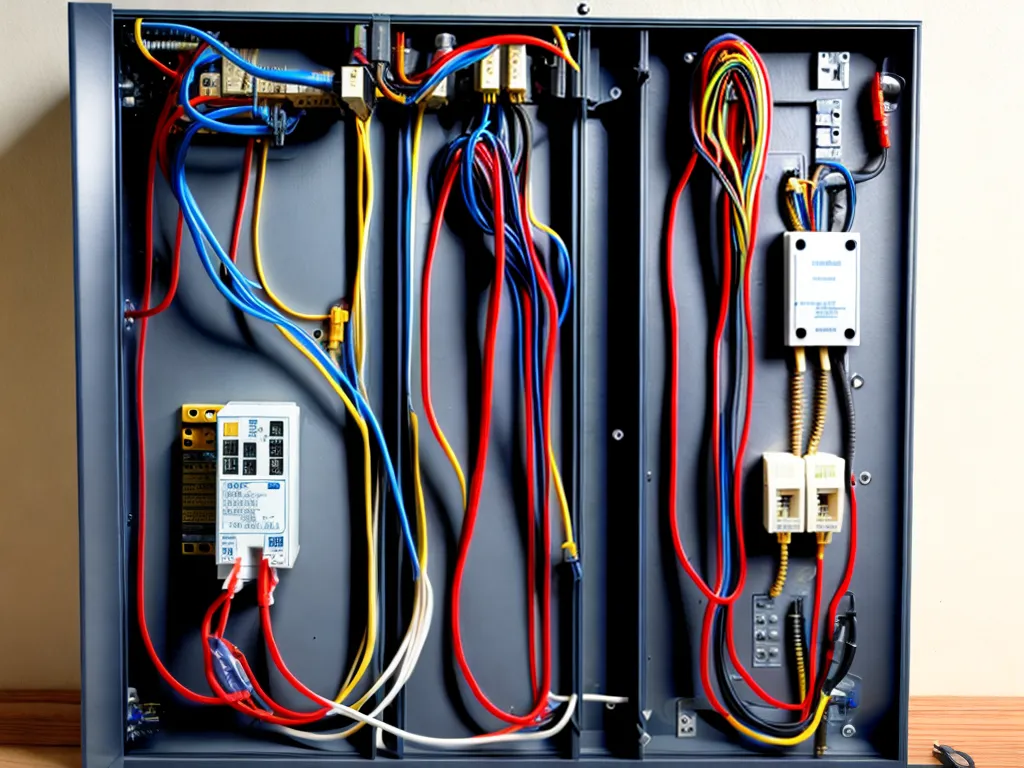
How to Wire a 400 Amp Service Panel
Introduction
Wiring a 400 amp service panel can seem daunting, but with the right planning and materials, a homeowner can successfully install their own panel. A 400 amp service provides enough power for larger homes with more electric appliances and devices. Carefully following electrical codes and safety procedures will ensure the work is done correctly. This guide will walk through the entire process step-by-step to teach you how to wire a 400 amp service panel.
Things You'll Need
Before getting started, make sure you have all of the necessary materials and tools:
-
400 amp service panel - This will be the main component, so choose a reputable brand like Square D or Eaton. Select a panel with enough spaces for all your current and future circuit breakers.
-
2/0 or 4/0 SER cable - Check your local electrical code for the required wire size based on 400 amps and the distance from your electrical meter. 2/0 cable is good for shorter runs under 50 feet.
-
Appropriate size breaker - A 400 amp main breaker is standard.
-
Assorted circuit breakers - Have 15, 20, and 30 amp breakers for branch circuits.
-
Lugs and anti-oxidant gel - For connecting wires to the service panel.
-
Conduit and fittings like weather heads - Check local code for the conduit size required.
-
Mounting hardware - To secure the panel to the wall.
-
Wire strippers, cutters, voltmeter, etc.
-
Safety gear like glasses and gloves
Step 1: Disconnect the Power
Before doing any work, you must disconnect the power by removing the fuses or turning off the main breaker in the old panel. Use a non-contact voltage tester to confirm that no power is present anywhere in the panel. Warning signs can also be posted at the electrical meter or by the panel access.
Step 2: Install New Service Panel
Mount the new 400 amp service panel in an accessible location where you can feed the wires in from the meter. The height should be around 5 feet from ground level. Use appropriate mounting brackets secured to wall studs if installing indoors. The panel also requires clearance space of at least 30 inches wide, 36 inches deep, and 6 feet high.
Step 3: Connect the Grounding Electrode Conductor
A #4 or #6 grounding electrode conductor (GEC) wire must be installed to connect the panel enclosure to ground. This usually attaches to a ground rod or other electrode outside your home. Connect the GEC to the dedicated ground bar in the panel using a lay-in lug.
Step 4: Install SER Cable and Neutral Wires
Run the SER cable from the service panel to your electrical meter. This may require drilling holes to thread the cable through framing. Use conduit where the wire is exposed. For a 400 amp service, you may need multiple runs of SER cable. Each one should have a separate neutral wire. Label the neutral wires "N1", "N2", etc.
Step 5: Connect SER Cables and Neutral Wires
Inside the service panel, land the SER cable hot wires on the main lugs only. The white neutral wires must each be separately landed on the neutral bar. Proper cable management will keep the wires neat and accessible. Torque lugs to spec with an inch-pound torque wrench. Apply anti-oxidant gel.
Step 6: Install Ground Rod and Ground Wire
Outside your home, drive a ground rod at least 8 feet into the earth. Run a #4 or #6 ground wire from the ground rod up to the service panel. Connect the ground wire to the ground bar in the panel. Bond it to the ground wires from the SER cables.
Step 7: Set the Main Breaker
Install the 400 amp main breaker in the panel, matching the manufacturer's directions. Breaker types include bolt-on, plug-in, and freestanding. Securely tighten connections for the incoming wires from the meter and all outgoing load wires.
Step 8: Install Breakers and Connect Circuits
Populate the panel with circuit breakers as needed. Run wire from the breakers to connect lights, receptacles, appliances, and other loads. Follow ampacities for each wire size. Neatly label and organize all circuits. Double check connections before energizing.
Step 9: Inspection and Energy Provider Approval
Before turning the power on, call for a final inspection by the local building department. Also contact your electric utility company to switch over the meter to the new panel. This ensures everything is compliant and minimizes any safety risks.
Conclusion
Installing a properly-sized 400 amp service panel provides the power capacity your home needs as electricity demands grow. Pay attention to safety, take your time on the wiring, and be diligent about following electrical codes. When done right, you'll have a fully-functional and safe 400 amp electrical service panel providing reliable power for decades to come.